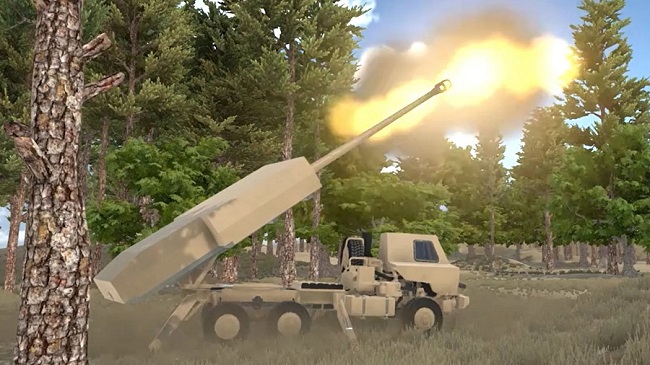
The US Army has announced the selection of BAE Systems to develop the prototype of a new 155 mm anti-aircraft artillery system equipped with hypersonic projectiles able to defend static and semi-static positions from attacks by a variety of threats, including unmanned aerial systems, cruise missiles and other advanced air threats.
The system has been named Multi-Domain Artillery Cannon (MDAC) and it will use the Hypervelocity Projectile (HVP). The unusual selection of BAE Systems, bypassing a competitive process among private vendors, has been dictated by the urgency of the requirement and the need to use existing fielded and mature technologies.
As officially stated by the US Army’s Rapid Capabilities and Critical Technologies Office (RCCTO) “ (the Army) has a requirement to develop and deliver a full Multi-Domain Artillery Cannon System Battery no later than Q4 FY27 followed by an operational demonstration in FY28.” In detail, an MDAC will be an air-, rail-, and sea-transportable (per MIL-STD-1366) wheeled systems, designed for rapid movement to enhance survivability, featuring an automated high rate of fire and a large magazine capacity for HVP.
According to the RCCTO report, “a full MDACS battery consists of 8 cannons, 4 Multi-Function Precision Radars (MFPR), 2 Multi-Domain Battle Managers, and separately, no less than 144 Hypervelocity Projectiles.”The HVP and the MFPR have been developed under separate projects as part of the future Hypervelocity Gun Weapon System (HGWS) program. In order to maximize its lethality, the MDAC is required to interface with the Army-furnished Command and Control Battle Manager (C2BM) and the Integrated Air and Missile Defense (IAMD) Battle Command System (IBCS).
The official announcement did not include any details about the amount of funding that will be included in the contract, but in accordance with US media, the US Army should spend $67 million in fiscal year 2025 to start the program and then increase investments more heavily in future years. As anticipated, it is expected to see a “series of flight tests culminating in a battery-level operational assessment in FY 2028.”








.png)
.gif)